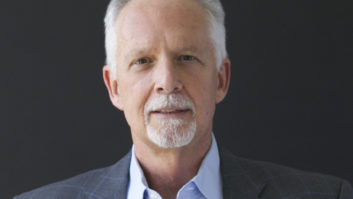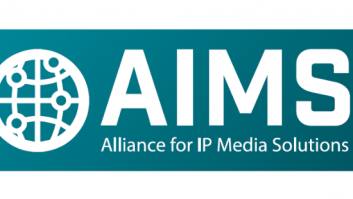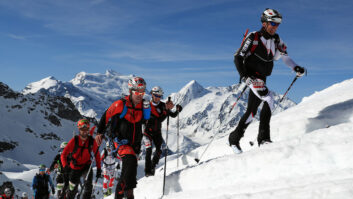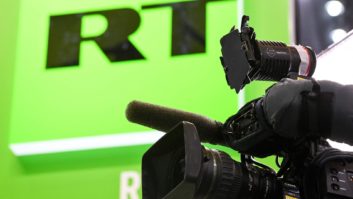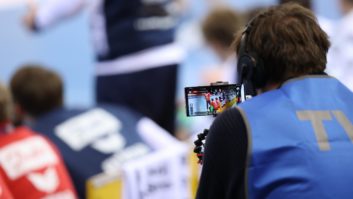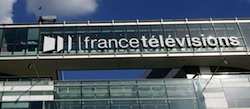
During the course of this year, France Télévisions will start to move into a new playout facility in Paris. Located on two adjoining sites, the facility will provide transmission services for the France 2, France 3, France 4 and France 5 channels.
The new facilities, called Centre de Diffusion et d’Echange (CDE), will also equip France Télévisions for TV Everywhere, with the ability to reach multiple screens over all distribution platforms including terrestrial, satellite, cable, IPTV, and also OTT (Over The Top) via adaptive streaming.
“This has been a major project for us and it took about a year to get the building ready before the equipment could start to be installed,” explains Yves Le Bras, France Télévisions’ director of Innovation and head of the CDE project. “One of the major challenges was the need to find a satisfactory way of integrating both linear and non-linear technology. This was an essential part of the whole scheme right from the beginning.”
He continues, “The aim was to find a single platform that would meet all our playout and distribution needs now and in the future. As the national broadcaster it is essential that we provide the best experience possible for all screens.”
The tendering process for the Systems Integration part of the project attracted responses from four potential suppliers. “We opted for a Sony solution because it offered the most efficient way of handling the complex transmission demands,” states Le Bras. “Sony demonstrated it had the right technology in place.
Combining technologies
Bertrand Caurier, Sony’s project director takes up the story. “The CDE will be one of the first of its kind in the industry. The solution for France Televisions has Sony’s Media Backbone Conductor at its heart and operates on the principles of Service Orientated Architecture, linking the broadcaster’s new playout facility with the rest of the enterprise. This solution encompasses workflow and service considerations and automates the exchange of content and metadata between the various digital production islands.”
The system covers all departments of France Télévisions responsible for acquiring and broadcasting media from the four premium channels and other group outlets focused on more specific subjects. Caurier goes on to say that Media & Broadcast Technologies (MBT) automation software with Omneon videos servers have been selected for the operation, while routers come from Miranda.
The ingest management is with the MBT software. File movement, QC and transcode are then managed via workflows in Sony Media Backbone Conductor, which unites all of the various specialist functions to drive operational efficiency. This decision was based around a mix of commercial and operational flexibility requirements. The ability to integrate MAM solutions from multiple vendors and the need to have a flexible workflow engine that can be expanded independently were key requirements that led to France Télévisions choosing Sony’s Media Backbone Conductor.”
Incorporated into the playout centre is a medium-sized studio, which includes a Sony MVS-6000 live production switcher, four Sony HDC-1400R studios cameras and Vinten robotics support & Lighting. The project also calls for France Télévisions to have the ability to merge into a single unified and internal structure for its ‘non-broadcasting’ services.
Sony not only provided the solution, but also manages the overall integration of the systems for France Télévisions, working among others with Paris-based Assistance Technique et Etudes de Materiels Electroniques – better known by its initials ATEME – who provided the encoding and decoding for the broadcast centre.
Delivery modes
“We are providing a turnkey subsystem called “traitement des departs,” declares Alvino Cordeiro, ATEME’s sales manager for southern Europe. “That name literally indicates for the process of outputs. This consists in putting the channels in the proper form in terms of compression for different delivery modes. The project includes driving detailed specifications with the end-user, designing of the system, installing and commissioning as well as providing support services once the centre is operational.”
Cordeiro states that the specific requirements for handling multi-screen projects are flexibility, multi-compatibility and mass transcoding capacity. “Indeed, the multi-screen environment is a dynamic playground which involves many different devices, type of content and ways to consume it. As a consequence, the solution addressing such a market must be able to adapt quickly to line-up changes, reconfigurations and new formats.”
He goes on, “The equipment required to meet this end included Kyrion CM5000 modular encoders for both SD and HD, DCM Multiplexers and IP switches from Cisco, a Titan Live transcoding platform, recording facilities for catch up TV and a Dataminer Network Management System to manage redundancy and monitor the system.” The CM5000 is used to distribute a high fidelity signal to IPTV providers (ISPs) for traditional Set Top Boxes viewers on a managed network.
The Data Channel Multiplexers collect all the channels coming from Kyrion CM5000 and other signals, such as SCTE35 and Electronic Programme Guides (EPGs), to create a Multi Program Transport Stream for the delivery process to those other operators of additional services. Titan Live transcodes the France TV channels to the different formats enabling an OTT distribution through the internet. France TV channels are then delivered with high quality at low bitrates to IP devices such as tablets, PCs or smartphones.
Catch-up TV recorders store all the television programme content on a 24/7 basis. These shows are then made available for seven days after the broadcast on a dedicated portal named Pluzz.
Dataminer NMS (Network Management System) allows France TV to maintain centralised control of the system, plus the potential to interface with external modules such as automation and Media Asset Management. The NMS also receives information from the playout automation system to mark in and mark out the segments of programmes that will be available on catch up TV. It then provides the information to the recording system to extract the catch up TV file.
Cordeiro says that the system also provides flexibility to a multiple screens operation. For example, TITAN allows France TV to encode in OTT formats, enabling the broadcaster to guarantee the quality of encoding, rather than having the operation carried out by subcontractors, such as the CDN providers, who may not have control over video quality.
In addition the future proof software approach gets France TV ready to launch new formats like MPEG-DASH.
“This solution brings many benefits,” maintains Cordeiro. “First, it is future proof. The CM5000 unit allows France TV to encode today in MPEG4-420 8 bits both SD and HD. However, based on a fully reprogrammable FPGA platform, it can be easily upgraded on site to enable MPEG-4 4:2:2 10-bit encoding profile. This field update is done without interruption of service.”
Indeed, future proofing has been a primary target of the whole project. Not only will the new playout platform be state of the art quality from the outset, but with the Sony Media Backbone Conductor sitting above the Media Asset Management systems for specific functions, France Télévisions is able to update the enterprise solution as and when it is needed.
Sony’s Caurier sums up the advantages, “Through this project, France Télévisions will benefit from increased exposure of each programme, and from optimised stock management, delivering realtime and cost savings.”
www.francetelevisions.fr
pro.sony.com
www.ateme.com
By Philip Stevens
